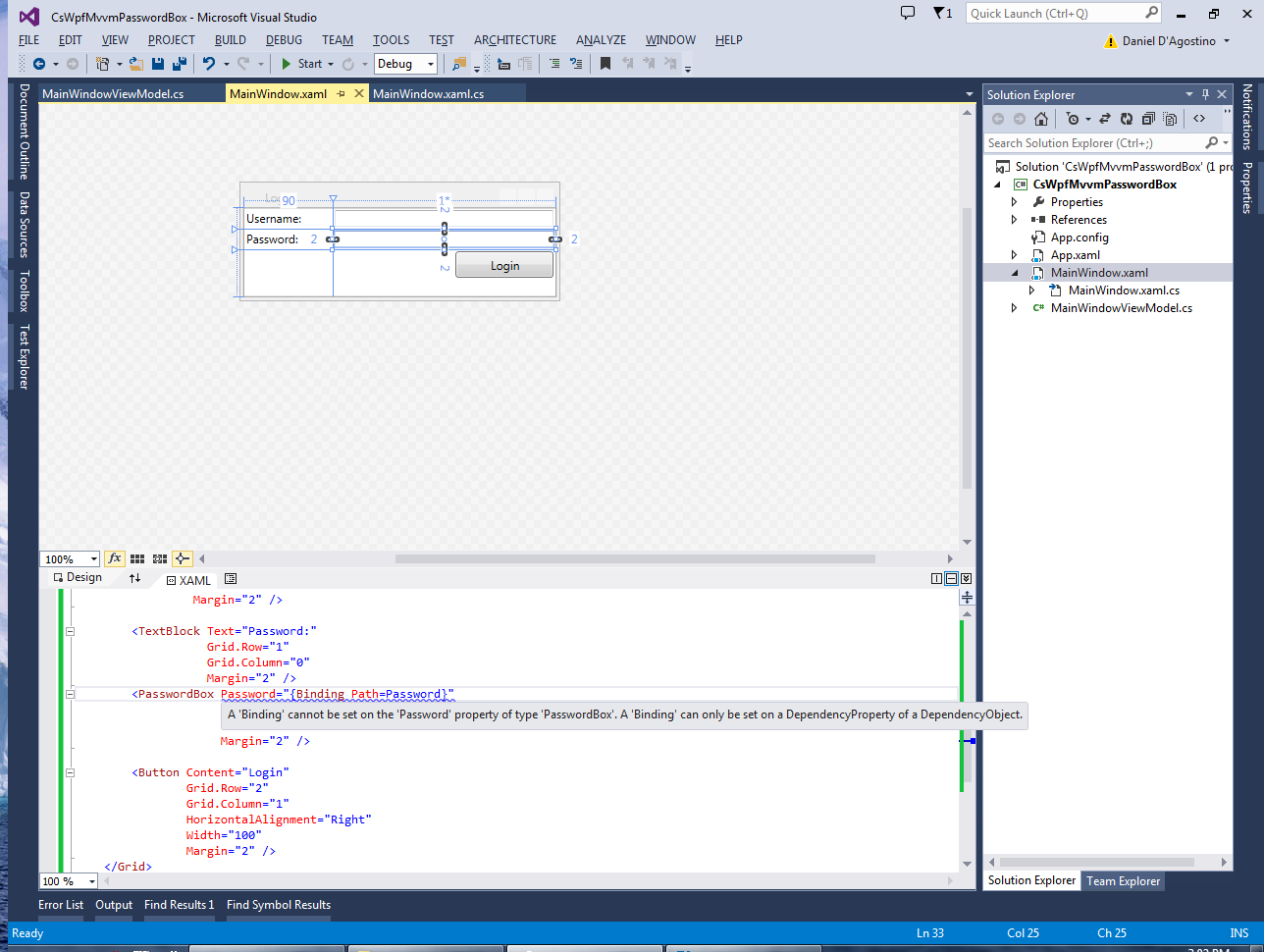

Now, you’ll notice right away that something’s wrong when you see the blue squiggly line at the password binding: Let’s go with this (just make sure the namespace matches what you have): Now we can build our form by editing the XAML in MainWindow.xaml.

Right, now let’s add a couple of properties to our MainWindowViewModel that we’ll want to bind to: This.DataContext = new MainWindowViewModel() ), set up your window’s DataContext by adding the following line at the end of your constructor: Create a new WPF application, and then add a new class called MainWindowViewModel. Right, so let’s set up something we can work with. This article is a little advanced in nature, and assumes you’re familiar with WPF and MVVM. And I’m also going to show you why it’s a very bad idea to do this. In this article, I’m going to show how the password can be bound in the ViewModel despite this limitation. The thing is that you can access the password entered by the user using the Password property, but it’s not a dependency property, and MVVM purists don’t like the fact that they can’t bind it to their ViewModel. In WPF circles, the PasswordBox control has generated quite a bit of discussion. The original premise of this article was that binding the password would expose it, but it turns out that it is already exposed regardless of whether you use data binding or not.
#Wpf passwordbox validate required update
Update 1st October 2018: As ZXeno posted in the comments, there seems to be a security flaw in the PasswordBox control by which it is possible to snoop passwords directly. This article was originally posted here at Programmer’s Ranch with the title “C# WPF/MVVM: Why You Shouldn’t Bind PasswordBox Password”, on 4th October 2014.


 0 kommentar(er)
0 kommentar(er)
